'Working together towards a sustainable future'. That was the title of a meeting organised by WaterstofNHN on 20 April in De Kampanje in Den Helder. During this well-attended afternoon, visitors were introduced to the possibilities, wishes and applications of hydrogen in the region. The grand finale was the official launch of WaterstofNHN, where producers and buyers of hydrogen can find each other and share knowledge.
From generation to delivery, more and more parties in the region are working together to develop a powerful hydrogen ecosystem. And that collaboration is the core to success, was also frequently mentioned last week.
First, honorary professor Catrinus Jepma, Frank Brandsen (New Energy Coalition and Development Company North Holland North) and Lennart van der Burg (TNO) introduced the visitors to the possibilities and necessity of hydrogen. Jepma outlined the future of the hydrogen economy in 5 years and mentioned three things that are driving this forward: the presence of natural gas pipelines that land from the sea; the limited capacity of the electricity grid; and the urgency to green the industry in the North Sea Canal Area (NZKG) with Tata Steel, among others.
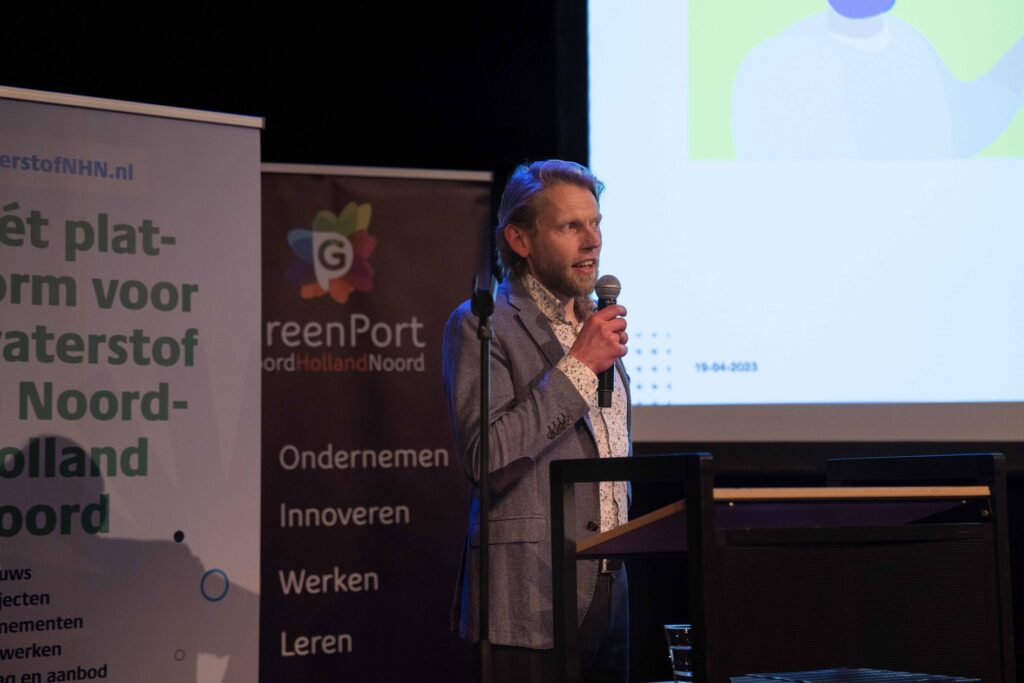
Lennart van der Burg, TNO Faradaylab, delved deeper into the opportunities for offshore electrolysis. According to Van der Burg, we are with hydrogen at about the same point as we were with solar energy twenty years ago. Around 2030, the demand for hydrogen will be around 60 gigawatts. New models of electrolysis installations are needed for this. TNO is committed to accelerating electrolysis technology, without losing sight of the safety aspect.
The attendees were then given a glimpse into the collaborations within the chain and innovations in practice. Jan Willem Langeraar (HYGRO) and André Mulder (AVIA Marees) took the audience on a tour of the project from wind to wheel (Duwaal). A unique component is the development of a wind turbine with a built-in electrolyser. A pipeline must be laid from this wind turbine in Wieringermeer to the AVIA filling station in Kolhorn. The HYGRO hydrogen mill can supply 500,000 kg of hydrogen per year. Enough to allow 70 trucks to drive 100,000 km.
In addition to electrolysis, it is also possible to produce hydrogen from biomass. Bob Busser (HyDevCo) spoke about this. The technical installation is based on the newly developed Hynoca technology. The residual product is biochar, a carbon-like substance that can be used as a soil improver.
HyDevCo is again around the corner from NXT mobility where the produced hydrogen can be refueled. Erik Metselaar talked about the NXT filling stations of the future. In addition to hydrogen, trucks can also charge electricity super fast here. This collaboration between GP Groot Energie, HYGRO and NXT mobility is in full swing.
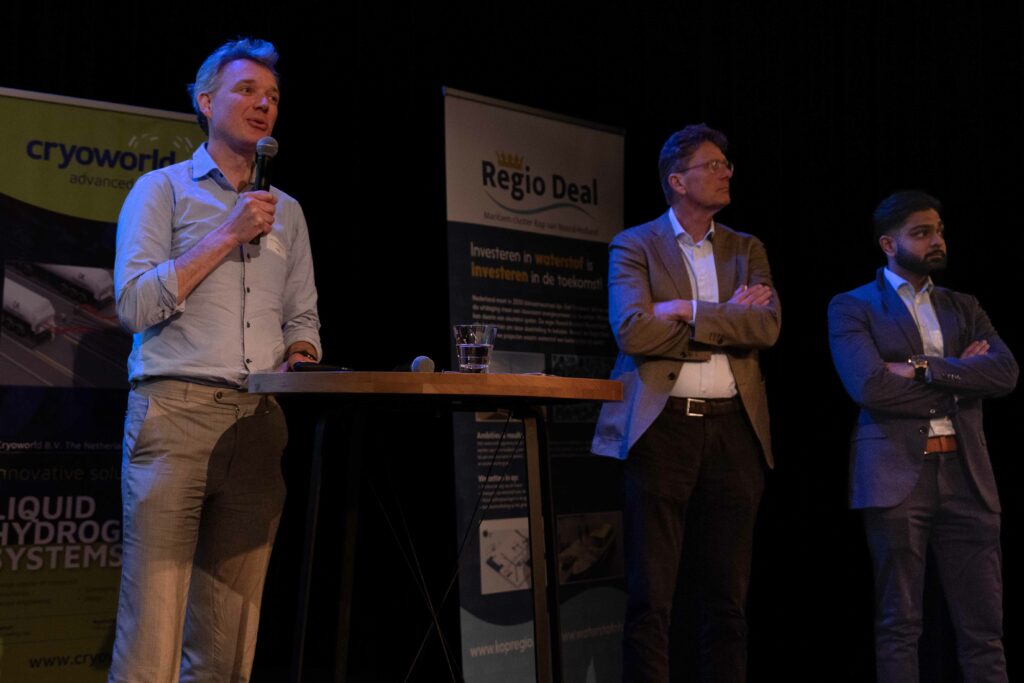
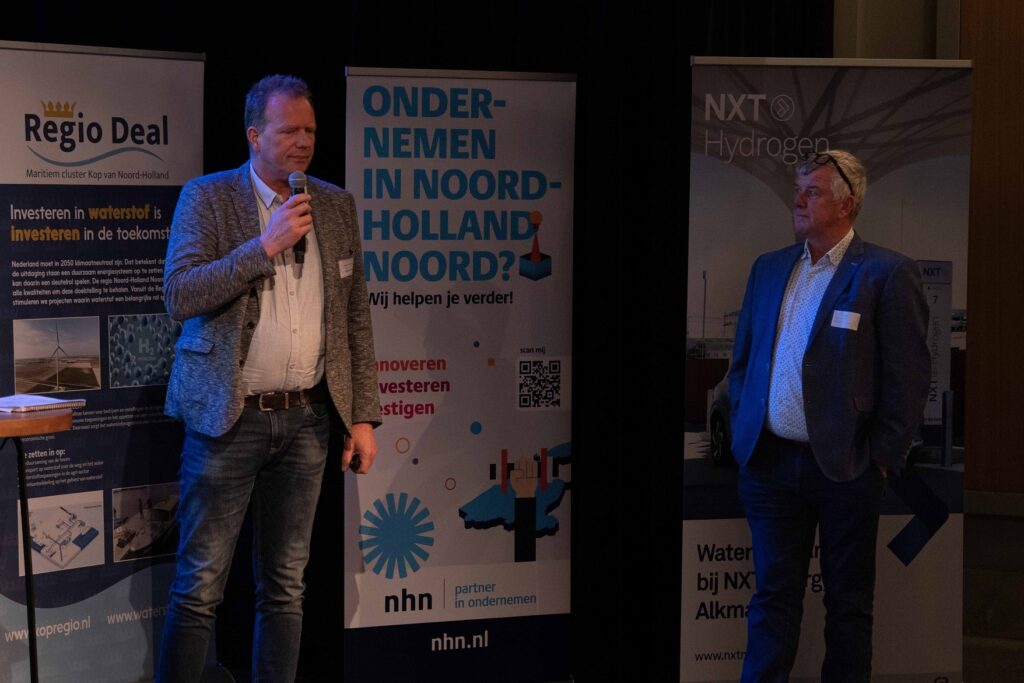
Cryoworld is an important link in the chain around the transport of hydrogen, by liquefying hydrogen the volume becomes smaller and it is easier to transport. Which is again very applicable in aviation and shipping. Van Dam Shipping has already started developing ships that sail on hydrogen. In order to make the use of hydrogen profitable, chain integration is essential, which was also highlighted in these presentations.
This message was supported by Jeroen Noot (Greenport Noord-Holland Noord) and Pim Sturm (Loonbedrijf Sturm Jacobs). “We must and want to, but in terms of being able to do so, there are still steps that need to be taken.” In practical terms, this involves a tractor that runs on hydrogen. But also about legislation and regulations, financing, safety and knowledge. In order to remove barriers, Greenport NHN, together with New Energy Coalition and Development Company Noord-Holland Noord, took the initiative to set up Agri Fieldlab HydrogenSturm Jacobs is one of the partners in this.
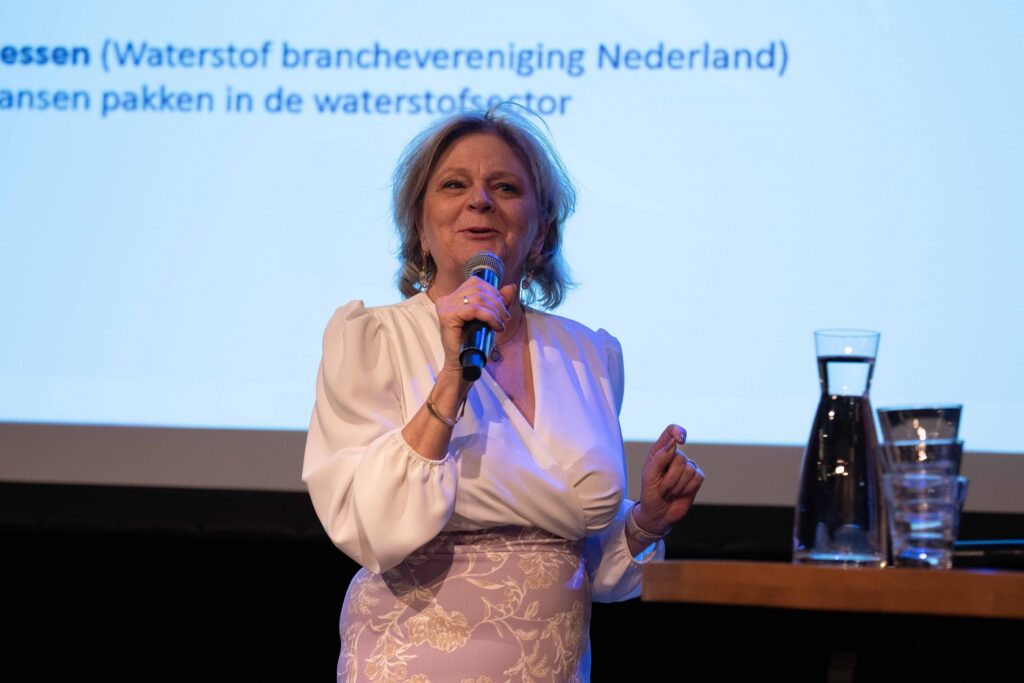
To link the links in the chain, the industry association hydrogen was founded in the Netherlands, Jacqueline Vaessen said. The emphasis is on hydrogen production at sea and transport via gas pipelines. But importing hydrogen from overseas should also be possible, Vaessen believes.
That North Holland is full of opportunities to become an international Hydrogen Hub was also emphasized by Wilmar van Grondelle of the North Sea Canal Area Project Office. It is not without reason that an application has been made for the Hydrogen Valley Status for the province of North Holland.
To further stimulate cooperation at regional level, the WaterstofNHN platform was officially launched by Mark Boerée at the end of the day. Stay up to date with the latest hydrogen news, learn more about the various hydrogen projects in the region and engage in conversation by registering for the community. The intention is for members of the community to meet each other both online and offline.
For this purpose, various knowledge meetings will be organized in the coming period. Interested parties can easily register for this via the community
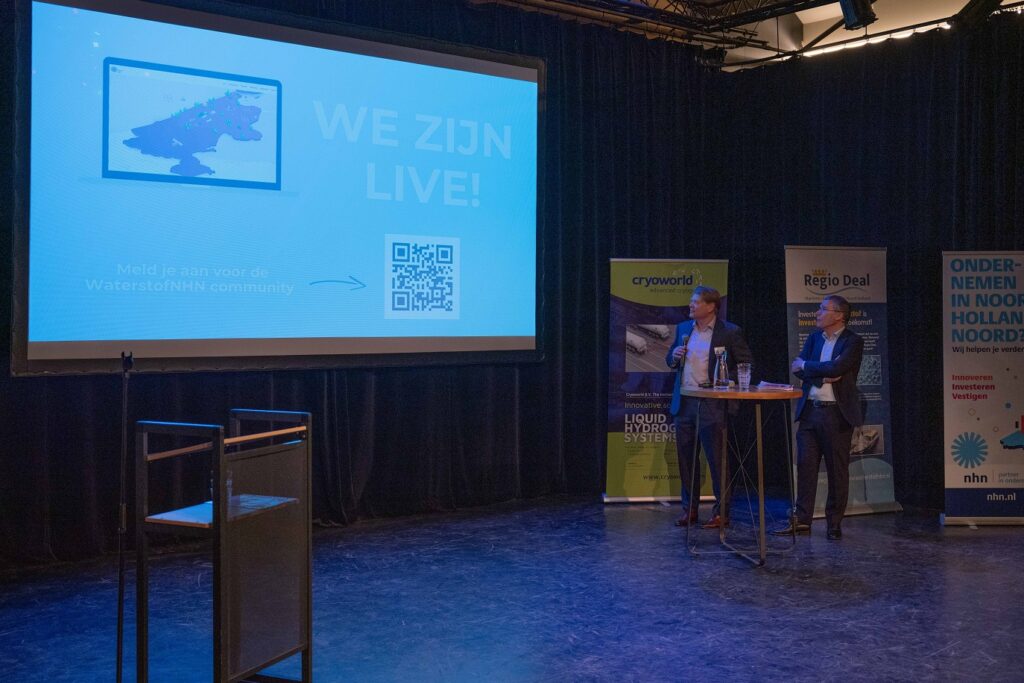
A nice surprise for the visitors of the event was the announcement of a subsidy scheme in the form of vouchers. This new subsidy, made possible by the Regional Deal Maritime Head of North Holland, is specifically intended for converting vehicles and vessels to hydrogen. “With this subsidy, we are giving an incentive to companies, such as in the shipping and agricultural sectors, to make more use of hydrogen,” said Boerée. The vouchers, worth up to 50,000 euros, can contribute to 30% of the conversion costs for these companies.
In addition to listening to presentations, there was also plenty to see and experience during the event. A hydrogen car was parked in front of the entrance to De Kampanje and inside, among other things, a hydrogen boat built by students of the Alfa College in Groningen and a hydrogen-powered bicycle could be admired. The presentations resulted in animated conversations with the makers. A special attraction was the VR experience that took visitors on a journey through the entire hydrogen chain: from production to application.